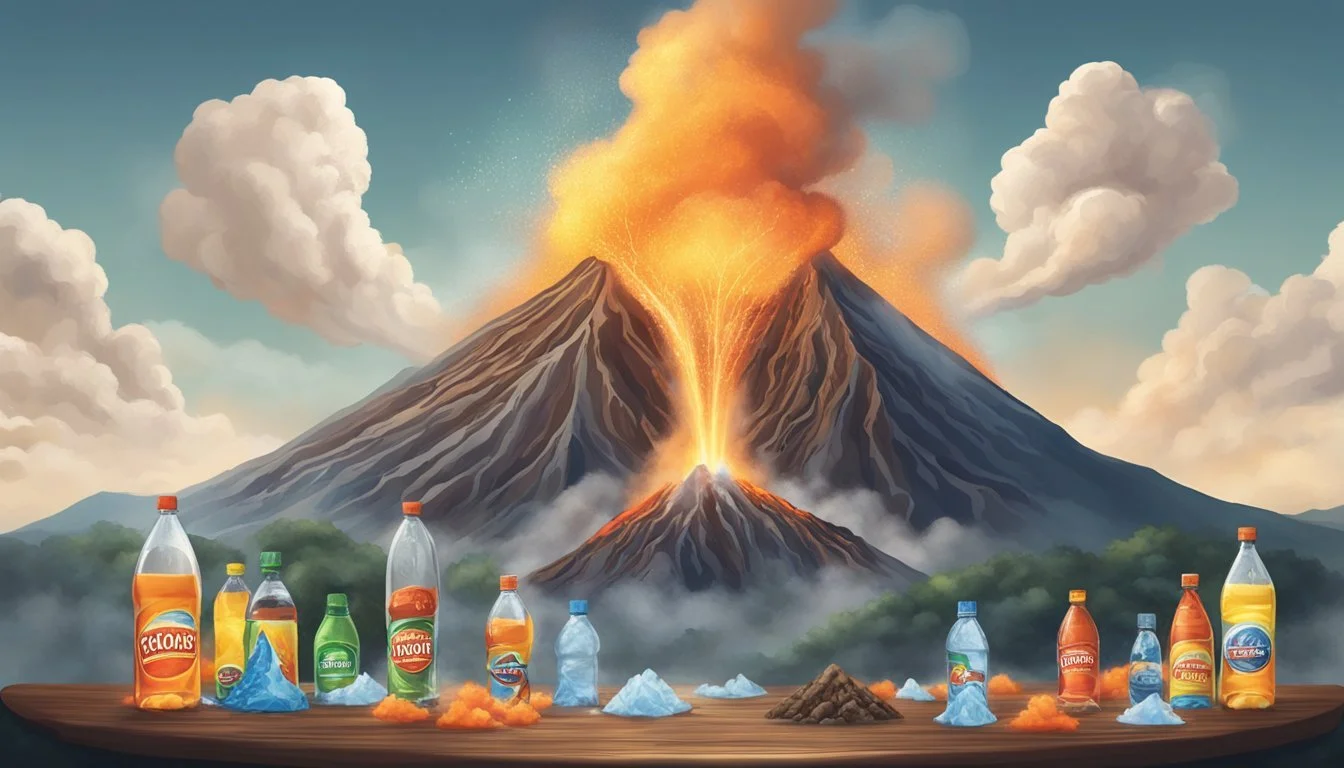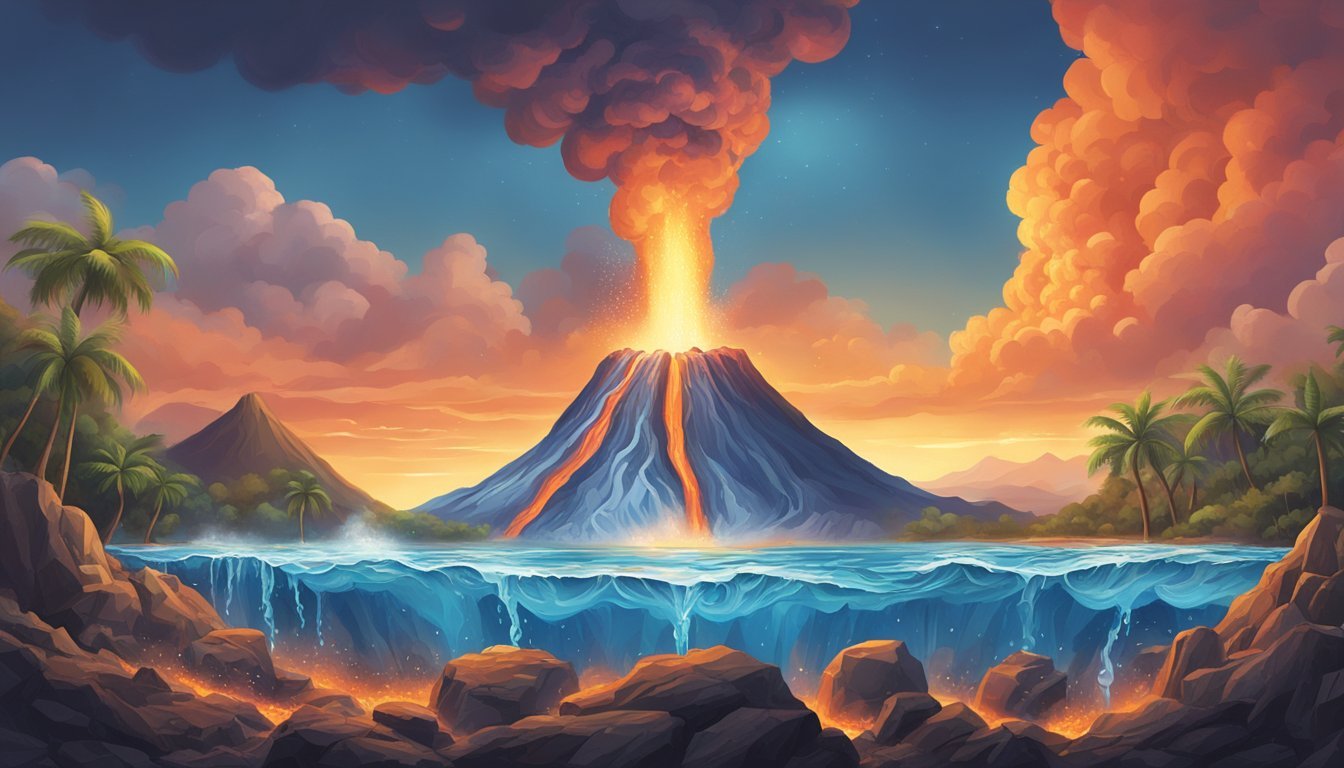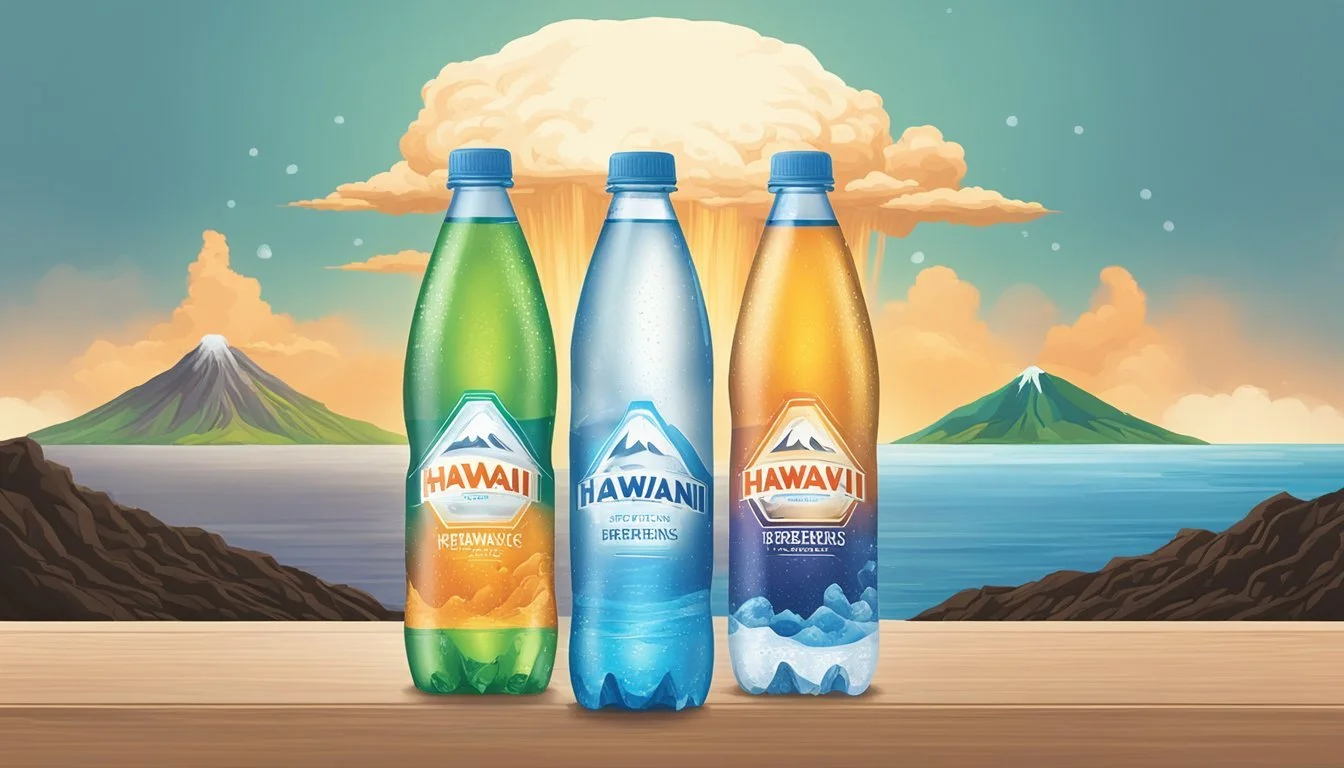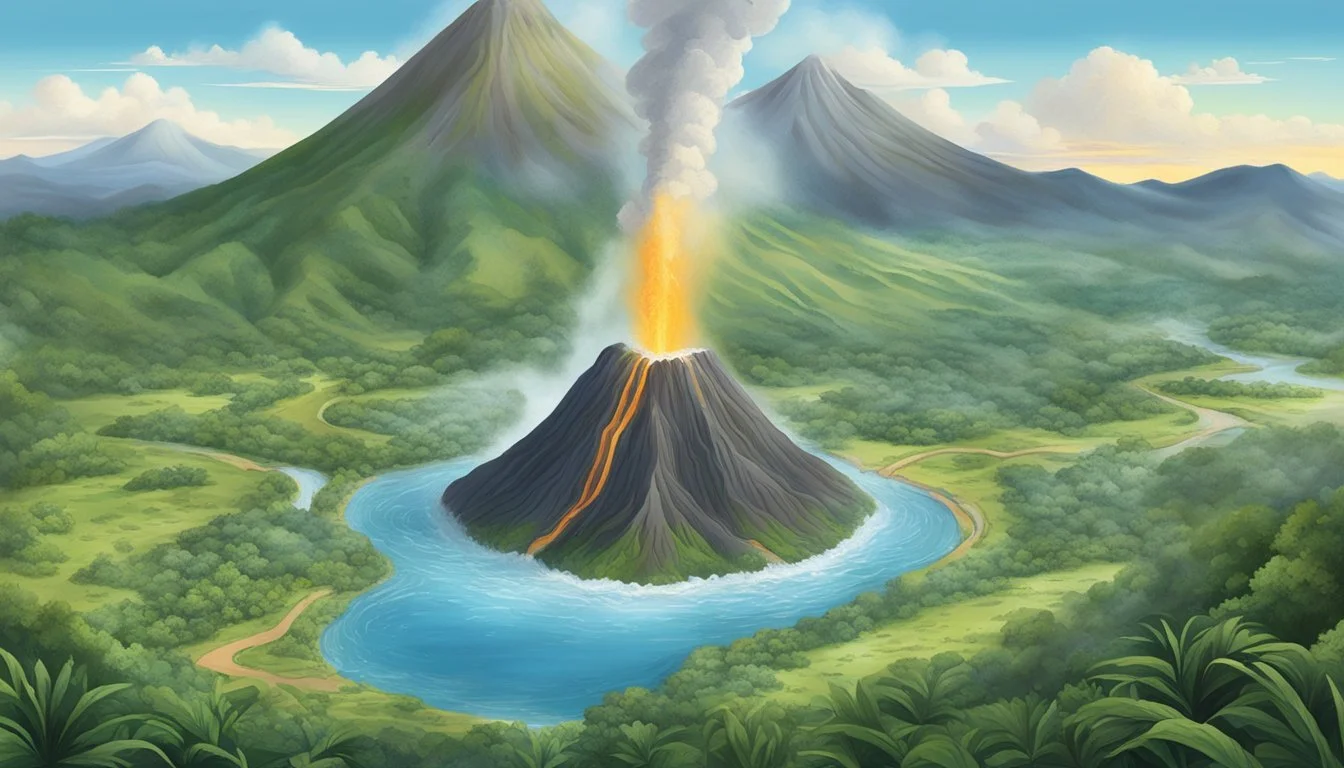Hawai’i Volcanic vs. Refreshe
Which Bottled Water is Better?
When selecting bottled water, many find themselves comparing Hawai’i Volcanic and Refreshe. Hawai’i Volcanic stands out for its commitment to sustainability and its unique volcanic filtration process, providing a mineral-rich, refreshing taste. Refreshe, on the other hand, offers an accessible and reliable hydration option that is often praised for its clean and neutral flavor.
Refreshe's affordability and widespread availability make it a staple in many households, but its source and filtration processes may not be as distinguished as Hawai’i Volcanic. The latter’s water is filtered naturally through volcanic rock, resulting in a distinct taste profile that appeals to those looking for a premium experience.
Environmental consciousness also plays a significant role in differentiating these brands. Waiākea, the company behind Hawai’i Volcanic, goes the extra mile with eco-friendly packaging and sustainable practices, which could tip the scales for environmentally minded consumers. By stark contrast, Refreshe focuses on delivering a no-frills approach to bottled water.
Understanding Bottled Water
Bottled water varies significantly based on its source, components, and health benefits. This article explores these aspects in detail to provide a comprehensive overview.
Source and Origin
The source and origin of bottled water profoundly impact its quality and composition. Natural spring water typically comes from underground sources where water flows naturally to the surface. Artesian aquifer water is sourced from confined aquifers under pressure, while Hawaiian volcanic water, such as that sourced from the Mauna Loa volcano on the Big Island of Hawai’i, is filtered through porous volcanic rock, enriching it with minerals.
Purified water generally undergoes processes like reverse osmosis or distillation to remove impurities, differing from natural sources in its production method. Understanding these sources helps consumers make informed choices about their water.
Components of Bottled Water
The components of bottled water include minerals, electrolytes, and pH levels. Alkaline water, known for a higher pH level (typically above 7), offers potential benefits by neutralizing acidity in the body. Key electrolytes—like potassium, magnesium, and calcium—support various bodily functions. Hawaiian volcanic water often contains silica, which benefits skin and hair health.
The pH level can indicate the water's alkalinity or acidity. For instance, Waiakea water, with a pH of around 8.8, contrasts with more acidic options such as Hawai’i Volcanic Sparkling Water. These differences in components can impact overall health and hydration.
Health and Hydration
Health benefits of bottled water vary based on its mineral content and source. For instance, naturally alkaline water can help regulate body pH and improve hydration. Minerals like calcium and magnesium contribute to bone health, while potassium supports muscle function, crucial for athletes.
Electrolytes play a significant role in maintaining hydration, making specific types of bottled water more beneficial for those engaged in physical activities. Hawaiian volcanic water, enriched with natural minerals from the Mauna Loa volcano, can offer unique health benefits that include boosting the immune system and enhancing physical performance.
By examining the source, components, and potential health impacts, consumers can choose the bottled water that best suits their needs.
Labels Under the Lens
Hawai’i Volcanic and Refreshe have distinct labels that provide valuable insights into their water quality, environmental impact statements, and regulatory adherence.
Label Accuracy and Regulations
Hawai’i Volcanic's label highlights its naturally alkaline pH of 8.8 and its source from Mauna Loa Volcano. The label claims to bottle less than 0.003% of water yielded at the volcanic slopes, ensuring sustainability. The pH level helps neutralize bodily acidity, enhancing its appeal.
Refreshe's label typically emphasizes purity and value. However, the pH and specific source details often feel vague compared to Hawai’i Volcanic. Clear labeling of contaminants and nitrate levels is crucial for both brands to maintain transparency and comply with water quality regulations.
Environmental Impact Statements
Hawai’i Volcanic is noted for its Certified CarbonNeutral status. The packaging uses RPET (Recycled Polyethylene Terephthalate), minimizing environmental footprint. Additionally, the brand's commitment extends to protecting biodiversity through bio-diverse forest preserves.
Refreshe also engages in environmentally friendly practices, but its claims are less specific. Highlighting their efforts in RPET packaging and overall sustainability could enhance their competitive edge. Critical evaluation of these statements informs eco-conscious consumers about each brand's ecological footprint and dedication.
Filtration and Purity
Hawai'i Volcanic and Refreshe offer distinct approaches to filtration and purity in their bottled water products. This section examines the natural and artificial filtration methods to compare their effectiveness.
Natural Filtration Processes
Hawai'i Volcanic utilizes a natural volcanic filtration process. The water originates from a deep well at the eastern base of the Mauna Loa volcano. As it passes through layers of porous lava rock, impurities are naturally removed. This method also adds essential electrolytes and minerals, contributing to an alkaline pH ranging from 7.6 to 8.5.
This form of filtration is entirely naturally occurring and involves no artificial enhancements. The water’s journey through volcanic rock yields a unique purity, often referred to as Glas Lava Filtered Still water, and it maintains a high degree of cleanliness without significant human intervention.
Artificial Filtration Methods
Refreshe employs artificial filtration methods. Typically, this involves multiple stages such as carbon filtration, ionization, and reverse osmosis. These processes are designed to eliminate contaminants, remove chlorine, and improve the taste.
Refreshe’s filtration processes ensure the removal of a wide range of impurities. This method offers consistency in water quality. Additionally, the use of activated carbon and other technologies allows for effective purification.
Artificial methods are efficient in providing a dependable product with standardized purity levels. These procedures are capable of producing water almost free of any dissolved solids, which some consumers prefer for its neutral taste.
Taste and Content Analysis
The taste and content of bottled water are pivotal factors for consumers. While Hawai’i Volcanic and Refreshe differ significantly in their taste profiles, they also vary in mineral content and total dissolved solids (TDS), which influence overall water quality.
Taste Profile
Hawai’i Volcanic originates from the porous volcanic rock of Hawaii, giving it a unique, crisp taste. This water is naturally filtered, resulting in a smooth and slightly sweet flavor profile. Its alkaline nature, with a pH ranging from 7.6 to 8.2, contributes to its refreshing and balanced taste. Waiākea’s unique terroir adds to its distinctiveness.
Refreshe, on the other hand, typically sources its water from various locations, resulting in a more standardized taste. It might lack the distinctive natural filtration process that Hawai’i Volcanic offers. Refreshe usually provides a clean and neutral taste, which is expected from mass-produced bottled water but might not stand out in a head-to-head taste comparison.
Mineral Content and TDS
Hawai’i Volcanic is celebrated for its naturally occurring minerals, particularly silica, which enhances taste and provides health benefits. The alkaline pH also aligns with the trend of consuming alkaline waters for potential health advantages. Mineral composition includes essential elements like calcium, magnesium, and potassium.
Refreshe is known for its balanced mineral content, which is carefully adjusted to ensure consistency. Its TDS levels might be lower, providing a lighter mouthfeel compared to Hawai’i Volcanic. The absence of significant unique minerals like those in Hawai’i Volcanic makes Refreshe more predictable in terms of mineral content.
Ensuring both brands meet safety and health standards is crucial. Hawai’i Volcanic's naturally higher mineral content is a key differentiator in the bottled water market, appealing to consumers looking for added benefits beyond hydration.
Branding and Consumer Offers
Hawai’i Volcanic and Refreshe have distinct approaches to branding and consumer offerings. Details of their marketing strategies and sustainability commitments can reveal which brand resonates more with consumers.
Marketing Strategies
Hawai’i Volcanic emphasizes its premium, naturally alkaline water sourced from Hawaiian volcanic filters. The brand highlights the unique qualities of Hawaiian water, leveraging imagery of pristine nature and volcanic minerals.
In contrast, Refreshe focuses on affordability and accessibility. The brand's marketing materials often stress low prices and widespread availability in major retail chains.
Social media presence for Hawai’i Volcanic involves collaborations with influencers, showcasing the health benefits of their water. Refreshe primarily uses traditional advertising and promotions to reach a broader audience.
These strategies reflect their target demographics: Hawai’i Volcanic appeals to health-conscious consumers, while Refreshe targets budget-conscious shoppers.
Sustainability Commitments
Hawai’i Volcanic Water takes pride in its sustainability commitments. The brand promotes the use of 100% RPET (recycled PET) bottles, ensuring environmentally friendly packaging. Additionally, the company supports initiatives for maintaining a sustainable yield of water resources, contributing to the preservation of natural landscapes.
Refreshe's sustainability efforts are less pronounced. The brand has made some moves toward responsible sourcing and packaging, but its focus remains on cost efficiency rather than environmental impact.
Hawai’i Volcanic also champions positive change through community projects and environmental partnerships. They actively educate consumers about water conservation and the importance of sustainable practices. This commitment stands out, as the brand aligns itself with eco-conscious values, appealing to customers who prioritize environmental responsibility.
Practical Considerations for Consumers
For consumers deciding between Hawai’i Volcanic and Refreshe bottled water, the key practical considerations include packaging options and the cost-effectiveness of each brand. Both factors play significant roles in the overall purchasing decision.
Packaging Options
Hawai’i Volcanic offers a variety of packaging options that cater to different consumer needs. The brand emphasizes sustainability, providing glass bottles and BPA-free reusable bottles. This can appeal to eco-conscious consumers who value reducing plastic waste.
Refreshe, on the other hand, primarily uses plastic bottles. While this may be less environmentally friendly, it does ensure convenience and ease of portability. However, these bottles are not typically reusable or designed with eco-friendly practices in mind.
Cost-Effectiveness and Value
When it comes to cost, Hawai’i Volcanic tends to be more expensive due to its premium features such as naturally alkaline water, sustainable practices, and high-quality packaging. The inclusion of beneficial minerals and electrolytes, often referred to as Mana, adds to the value but also to the price.
Refreshe is generally more affordable and widely available. It offers a practical solution for everyday hydration needs without the added cost of premium features.
Cost-per-ounce for Refreshe is usually lower, making it an attractive option for budget-conscious consumers.
Comparative Assessment
Hawai’i Volcanic and Refreshe are notable bottled waters with unique characteristics. Examining aspects like alkalinity, taste, source, and sustainability can highlight key differences.
Hawai’i Volcanic vs. Refreshe Verdict
Hawai’i Volcanic:
Source: Artesian well at the base of Mauna Loa volcano.
pH Level: Naturally alkaline with a pH around 8.0.
Taste: Smooth, soft, slightly sweet.
Minerals: Contains trace minerals and electrolytes.
Sustainability: Lava-filtered, sustainably sourced, and carbon-neutral.
Refreshe:
Source: Various municipal and private springs.
pH Level: Generally neutral, around pH 7.0.
Taste: Clean and crisp.
Minerals: Basic mineral content, no special filtration.
Sustainability: No specific sustainability initiatives highlighted.
Hawai’i Volcanic offers naturally alkaline water with higher mineral content and strong sustainability efforts. Refreshe, while clean-tasting, does not emphasize these premium features. For those valuing health benefits and eco-friendliness, Hawai’i Volcanic may be the preferred choice.
More About Hawai’i Volcanic
Acqua Pana vs Hawaii Volcanic: Which Bottled Water is Better?
Antipodes vs Hawaii Volcanic: Which Bottled Water is Better?
Aqua Carpatica vs Hawaii Volcanic: Which Bottled Water is Better?
Arrowhead vs Hawaii Volcanic: Which Bottled Water is Better?
Boxed Water vs Hawaii Volcanic: Which Bottled Water is Better?
Castle Rock vs Hawaii Volcanic: Which Bottled Water is Better?
Core Hydration vs Hawaii Volcanic: Which Bottled Water is Better?
Deer Park vs Hawaii Volcanic: Which Bottled Water is Better?
Hawaii Volcanic vs 1907water: Which Bottled Water is Better?
Hawaii Volcanic vs Alkaline88: Which Bottled Water is Better?
Hawaii Volcanic vs Big Chill: Which Bottled Water is Better?
Hawaii Volcanic vs BodyArmor: Which Bottled Water is Better?
Hawaii Volcanic vs Cascade Mountain: Which Bottled Water is Better?
Hawaii Volcanic vs CBD Living: Which Bottled Water is Better?
Hawaii Volcanic vs Crystal Geyser: Which Bottled Water is Better?
Hawaii Volcanic vs Crystal Lake: Which Bottled Water is Better?
Hawaii Volcanic vs Essence pH10: Which Bottled Water is Better?
Hawaii Volcanic vs Kirkland Signature: Which Bottled Water is Better?
Hawaii Volcanic vs Liquid Death: Which Bottled Water is Better?
Hawaii Volcanic vs Open Water: Which Bottled Water is Better?
Hawaii Volcanic vs Proud Source: Which Bottled Water is Better?
Hawaii Volcanic vs Pure Life: Which Bottled Water is Better?
Hawaii Volcanic vs Purely Sedona: Which Bottled Water is Better?
Hawaii Volcanic vs Richard's Rainwater: Which Bottled Water is Better?
Hawaii Volcanic vs Simple Truth: Which Bottled Water is Better?
Hawaii Volcanic vs Talking Rain AQA: Which Bottled Water is Better?
Hawaii Volcanic vs Weird Water: Which Bottled Water is Better?
Hawaii Volcanic vs Whole Foods 365: Which Bottled Water is Better?
Hawaii Volcanic vs Whole Foods Italian Still Mineral water: Which Bottled Water is Better?
Hawaiian Springs vs Hawaii Volcanic: Which Bottled Water is Better?
Ice Mountain vs Hawaii Volcanic: Which Bottled Water is Better?
Icelandic Glacial vs Hawaii Volcanic: Which Bottled Water is Better?
Just Water vs Hawaii Volcanic: Which Bottled Water is Better?
Mountain Valley Spring Water vs Hawaii Volcanic: Which Bottled Water is Better?
Nestle Pure Life vs Hawaii Volcanic: Which Bottled Water is Better?
Poland Spring vs Hawaii Volcanic: Which Bottled Water is Better?
San Pellegrino vs Hawaii Volcanic: Which Bottled Water is Better?
Smartwater vs Hawaii Volcanic: Which Bottled Water is Better?
Solan de Cabras vs Hawaii Volcanic: Which Bottled Water is Better?
Topo Chico vs Hawaii Volcanic: Which Bottled Water is Better?
Zephyrhills vs Hawaii Volcanic: Which Bottled Water is Better?
More About Refreshe
Cascade Mountain vs Refreshe: Which Bottled Water is Better?
Hawaiian Springs vs Refreshe: Which Bottled Water is Better?
Icelandic Glacial vs Refreshe: Which Bottled Water is Better?
Mountain Valley Spring Water vs Refreshe: Which Bottled Water is Better?
Nestle Pure Life vs Refreshe: Which Bottled Water is Better?
Refreshe vs Kirkland Signature: Which Bottled Water is Better?
Richard's Rainwater vs Refreshe: Which Bottled Water is Better?
Talking Rain AQA vs Refreshe: Which Bottled Water is Better?
Whole Foods Italian Still Mineral water vs Refreshe: Which Bottled Water is Better?






